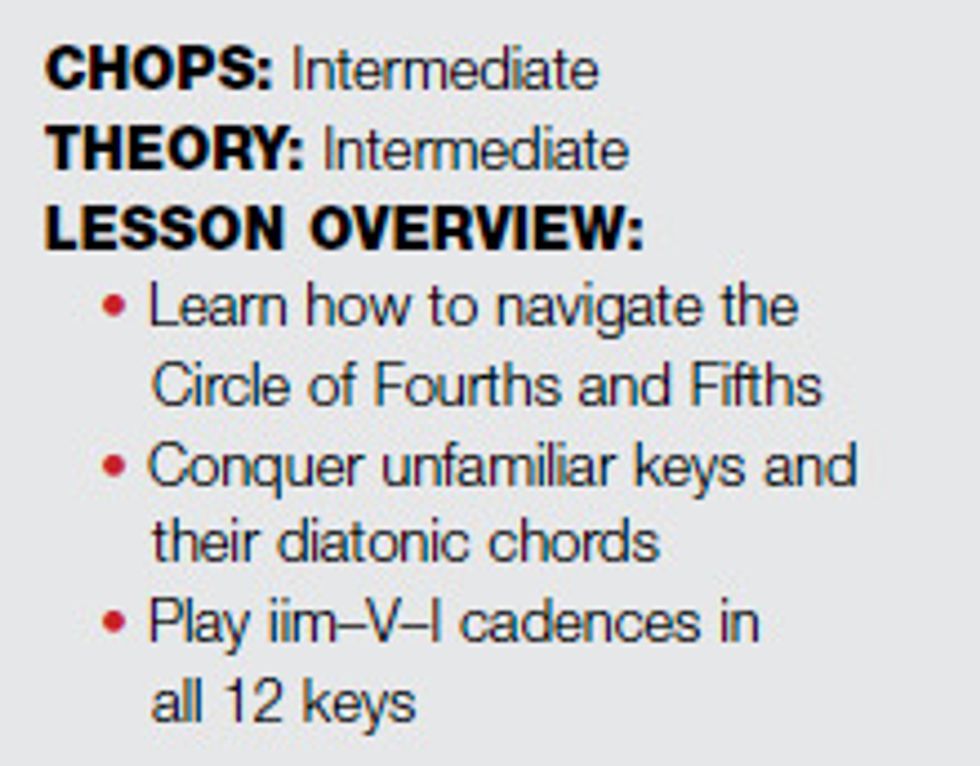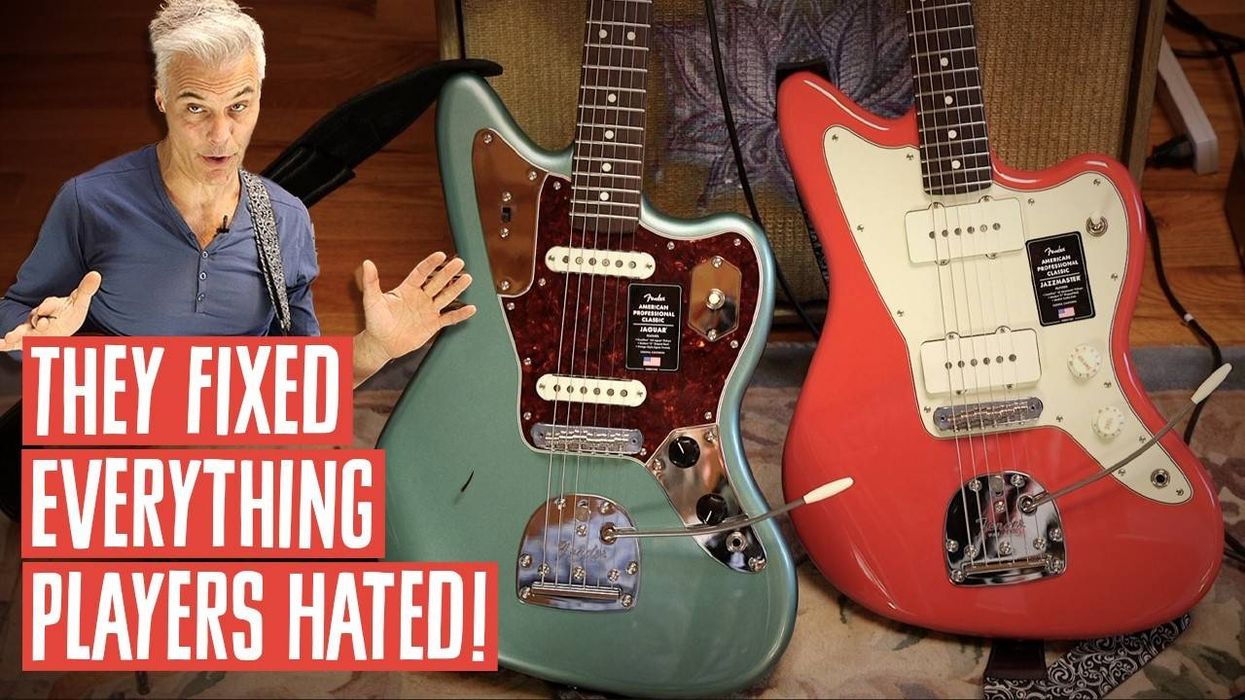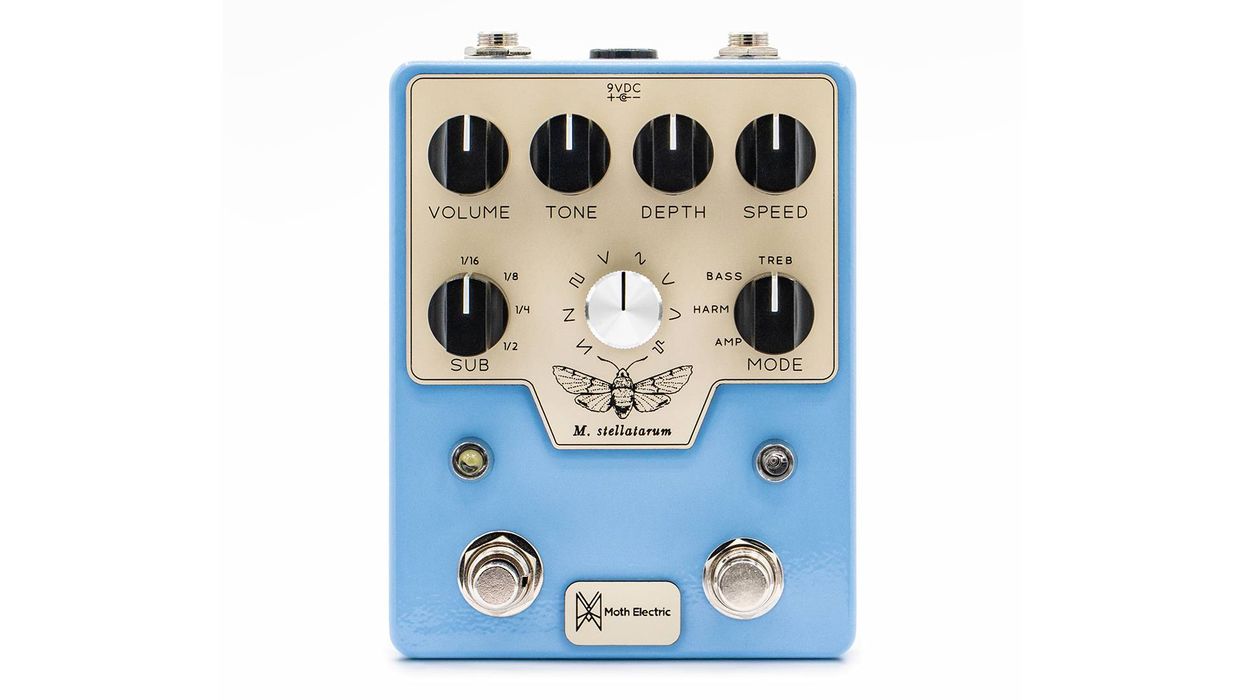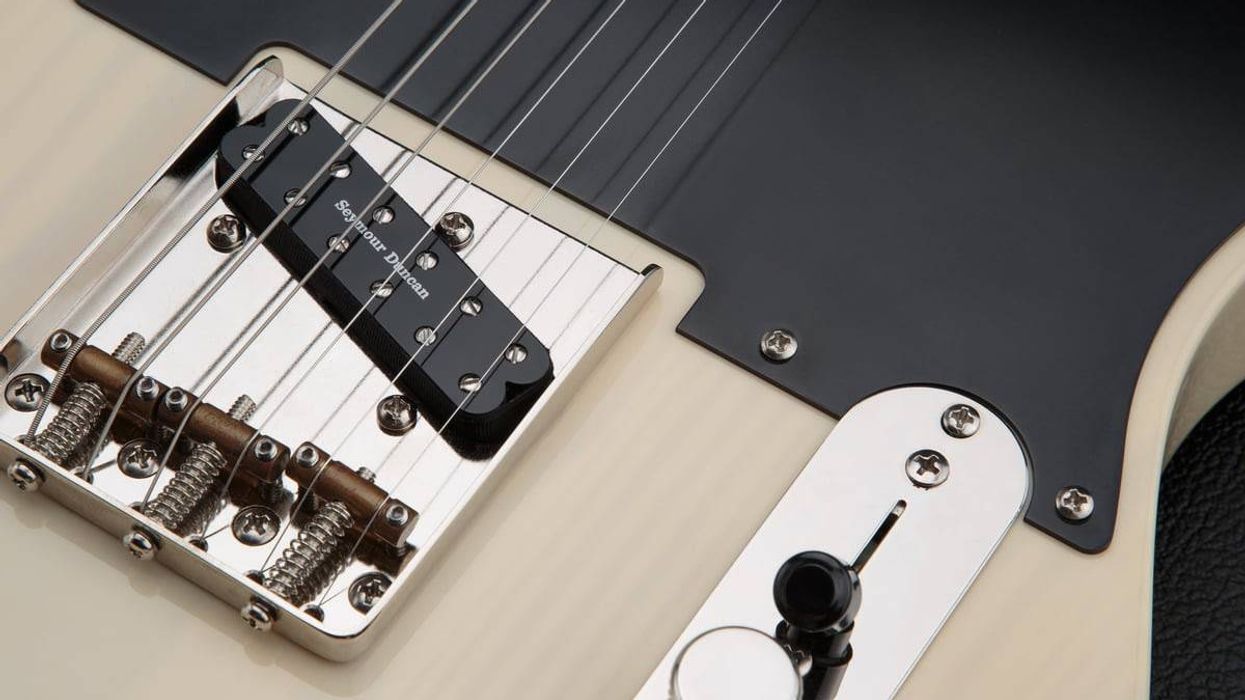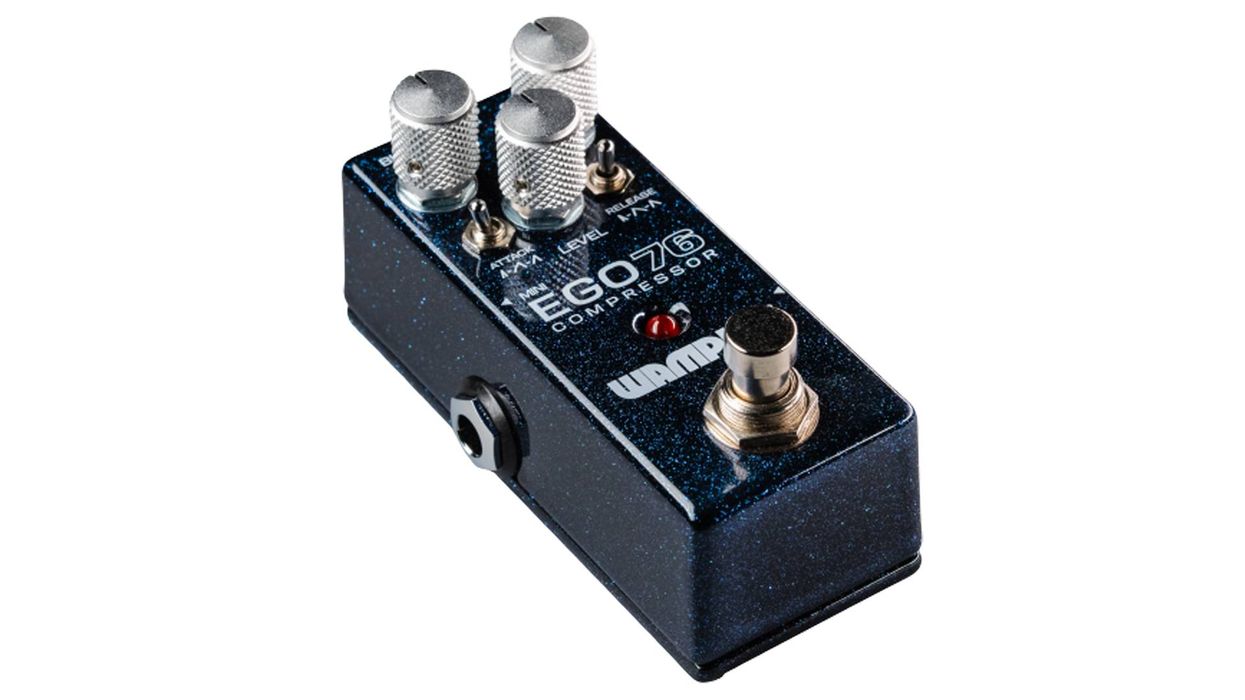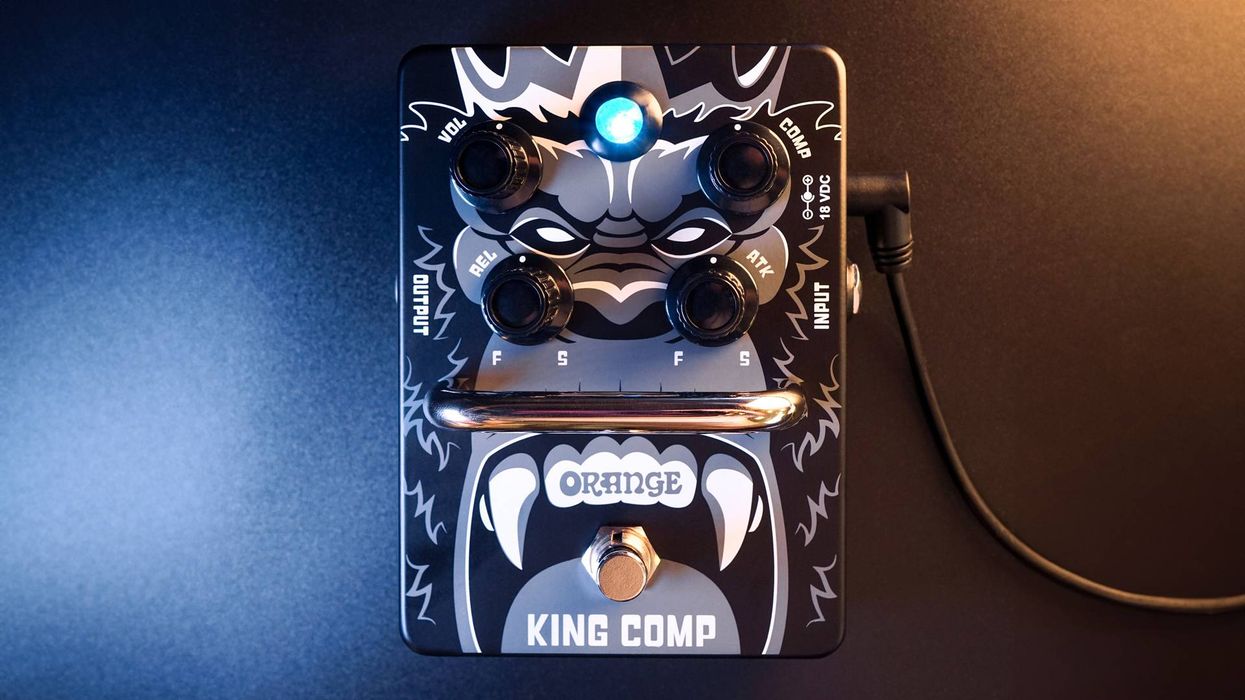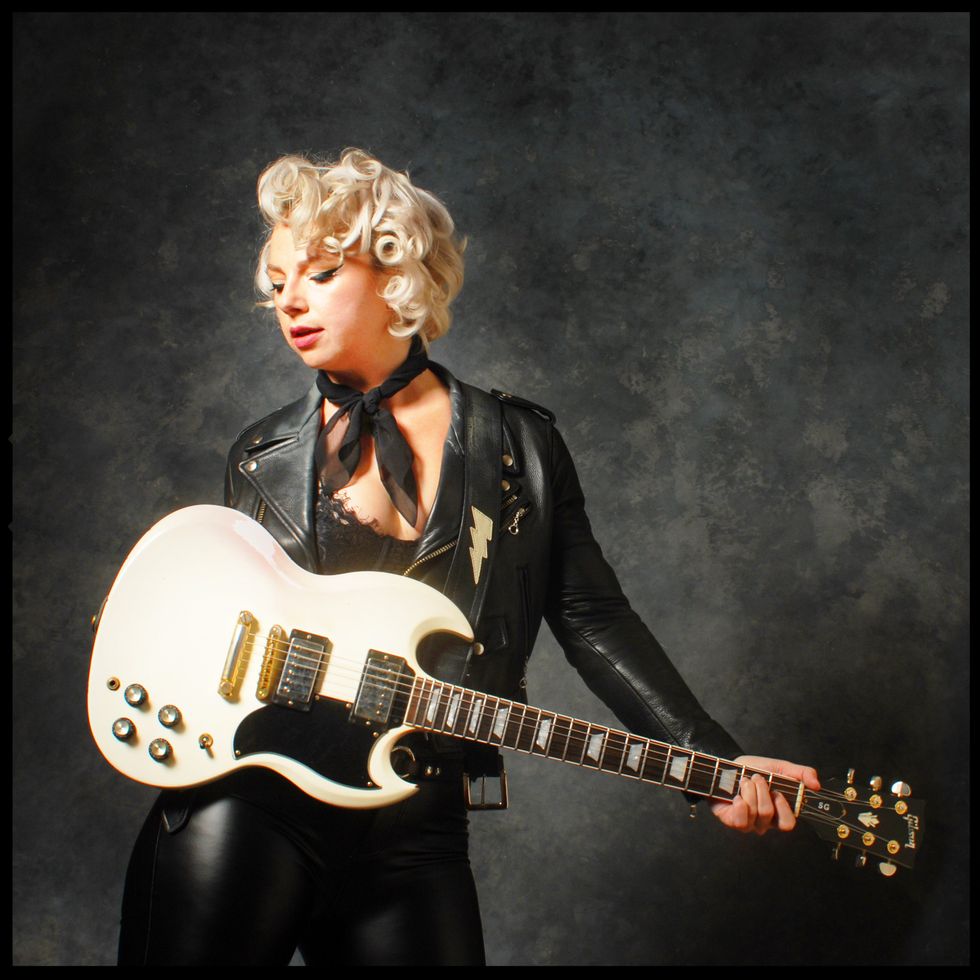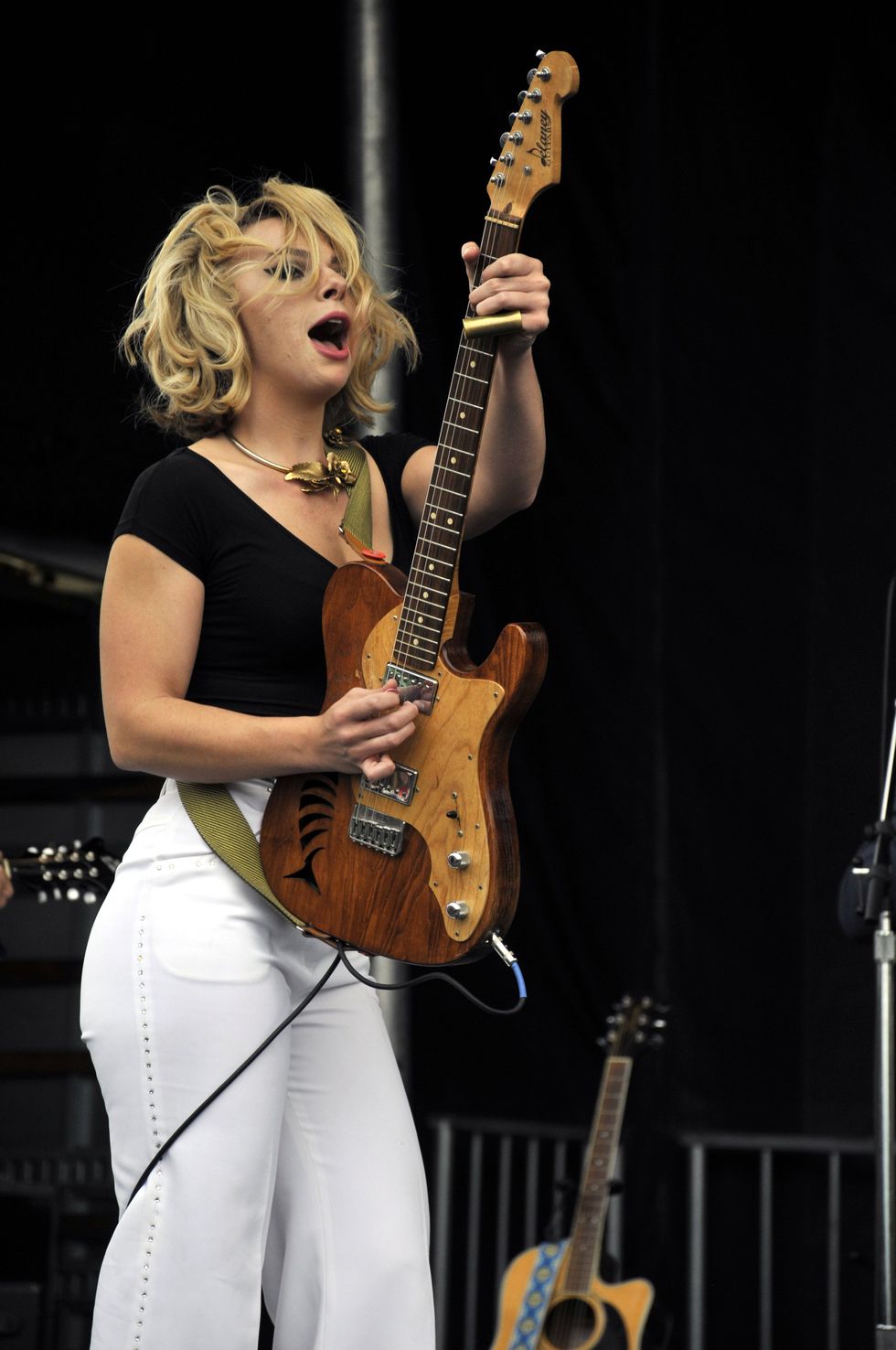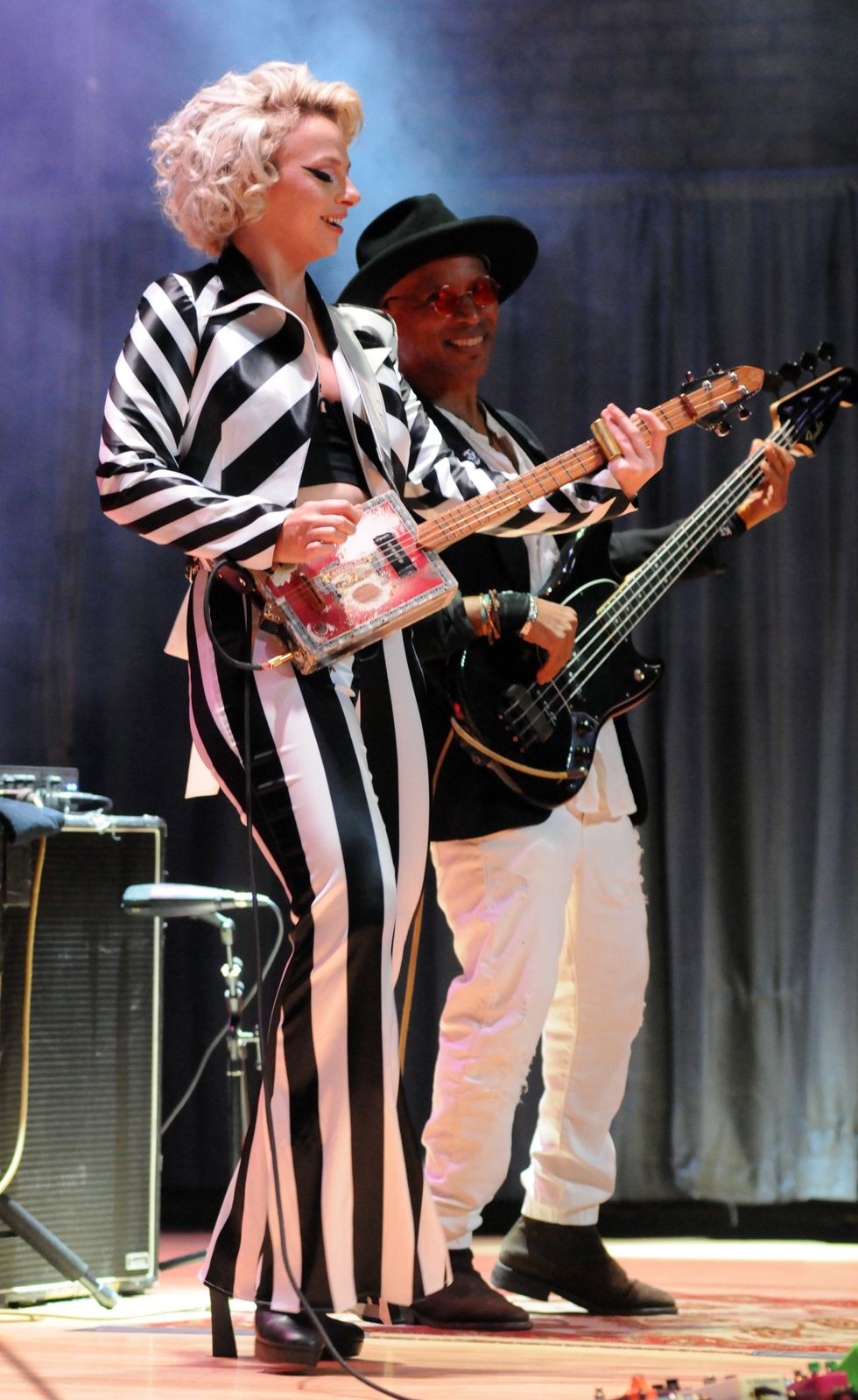Do you ever feel trapped on the fretboard?
Comfortable in certain keys, but utterly
lost in others? If so, you’re not alone. I’ll bet
most of us happily cruise along in the keys of
C, G, D, A, or E, yet sputter out when playing
in Eb, Db, and Ab. Barre and power chords
are pretty easy to deal with—just slide them
to the right fret, follow familiar fretboard
patterns, and you’re in business. But when it
comes to creating an artful accompaniment in
one of those “dusty” keys ... well, the best plan
may be to reach for a capo. And there’s nothing
wrong with that, assuming you stay in one
key for the entire song.
However, when you tackle music that has several key changes in it, a capo loses most of its advantages. Really, there’s no substitute for being able to navigate all 12 keys using nothing but your bare hands.
Fig. 1 shows our secret weapon for mastering all 12 keys on the guitar. This simple and ingenious wheel—officially called the Circle of Fourths and Fifths—can reveal all kinds of music-theory secrets, once you understand how to use it.

For starters, put your finger on C, right up there at 12 o’clock. Go ahead—touch it, no one’s watching. From C, our starting point, the 11 other notes of the Western music system are arrayed around the outside of this circle. If you travel counterclockwise (CCW), each note is a perfect fourth from its predecessor. So, F is a fourth away from C, Bb is a fourth from F, Eb is a fourth from Bb, and so on. All the way around the wheel.
Move clockwise, however, and our 12 notes are separated by a perfect fifth—G is a fifth away from C, D is a fifth from G, etc.
Now you know how to immediately find the tone a fourth or fifth away from any given note. Simply touch your target note and shift one click CCW (fourth) or CW (fifth). Voilà. This also works for chord roots, so now you can easily locate the major chord a fourth away from Bb (yes, that’s Eb).
But that’s not all. When we use the letters around the outside of the wheel to represent the 12 major chords, we can see their respective relative minors parked right inside the circle. Cool! If you need to know the relative minor chord for B major, find B on the wheel, slide inside, and there you are: G#m.
Our wheel (or cycle chart, as it’s sometimes called) has several other surprises in store. Perhaps the most significant for chord hounds is the pattern shown in Fig. 2. Here we see the I chord at the 12 o’clock position, with the IV (CCW) and V (CW) chords displayed on either side. Directly inside are the vim (relative minor to I), the iim (relative to the IV), and iiim (relative to the V). Sweet—this maps the location of six of the seven diatonic chords in a major key.

And this pattern holds true anywhere you rotate it on the wheel. Simply shift the pattern CCW or CW and align the I with whichever note represents the I chord of your chosen key. Try it: What are the diatonic chords in the key of A? Mentally align the I to A, and you’ll find the IV (D), V (E), iim (Bm), vim (F#m), and iiim (C#m) all conveniently clustered around the I.
Just remember, don’t think “left” and “right,” but rather “counterclockwise” and “clockwise.” This is crucial for making the wheel work properly.
Okay, that’s fun and useful. But how does the wheel apply to our fretboard? One answer is, it allows us to trace important progressions in every key, thus giving us a way to mindfully practice moving from one key to another—all around the wheel until we return to our starting point.
This is important: If we play chords bigger than triads (four-note 7th chords, for instance, or extended harmony like 9th, 11th, and 13th chords), assuming we stay strictly within our key, the iim will always be in the minor 7th family (which includes minor 9, for example), the V chord will be a dominant 7th type (or dominant 9, 11, or 13), and the I chord will be a major 7th type (or larger).
Check out Fig. 3, a iim-V-I progression in the key of C. Here we have a classic jazz cadence: Dm7–G13–Cmaj7. This is what jazzbos call a “two-five-one.” This progression lies at the heart of hundreds of standards and jazz tunes—the way a I–IV–V progression lies at the heart of blues (“let’s jam a one-four-five in the key of C”). Going back to Fig. 2, trace this iim-V-I movement with your finger and observe its triangular shape. We’ll be replicating this shape all around the Circle of Fourths and Fifths.
or download example audio

Using the wheel to work out a iim–V–I cadence in six keys, I came up with the progression in Fig. 4. If you eyeball the music, you’ll see that we’re rolling CCW around the wheel, playing through the keys of F, Bb, Eb, Ab, Db, and Gb. (I stopped at six keys simply for space considerations. You can continue moving CCW all the way around the wheel until you return to the key of F. It’s a great workout for your fingers and ears.)
or download example audio

To keep things interesting, I added some rhythmic variations and a few single-note lines to connect the last chord in one key to the first chord of the next. As you play this 12-bar passage, go slowly. Listen for the underlying harmonic movement within each key, as well as how one key jumps to the next. It’s more important to focus on the sounds than to nail the chord changes in tempo. Start by tuning into the root motion and go from there.
Next month, we’ll find more ways to work out with our training wheel. Meanwhile, try cycling through a few iim- V-I progressions of your own.
 Andy Ellis is a veteran guitar journalist
and Senior Editor at PG. Based
in Nashville, Andy backs singer-songwriters
on the baritone guitar, and also
hosts The Guitar Show, a weekly on-air
and online broadcast. For the schedule,
links to the stations’ streams, archived audio
interviews with inspiring players, and more,
visit theguitarshow.com.
Andy Ellis is a veteran guitar journalist
and Senior Editor at PG. Based
in Nashville, Andy backs singer-songwriters
on the baritone guitar, and also
hosts The Guitar Show, a weekly on-air
and online broadcast. For the schedule,
links to the stations’ streams, archived audio
interviews with inspiring players, and more,
visit theguitarshow.com.
However, when you tackle music that has several key changes in it, a capo loses most of its advantages. Really, there’s no substitute for being able to navigate all 12 keys using nothing but your bare hands.
Fig. 1 shows our secret weapon for mastering all 12 keys on the guitar. This simple and ingenious wheel—officially called the Circle of Fourths and Fifths—can reveal all kinds of music-theory secrets, once you understand how to use it.
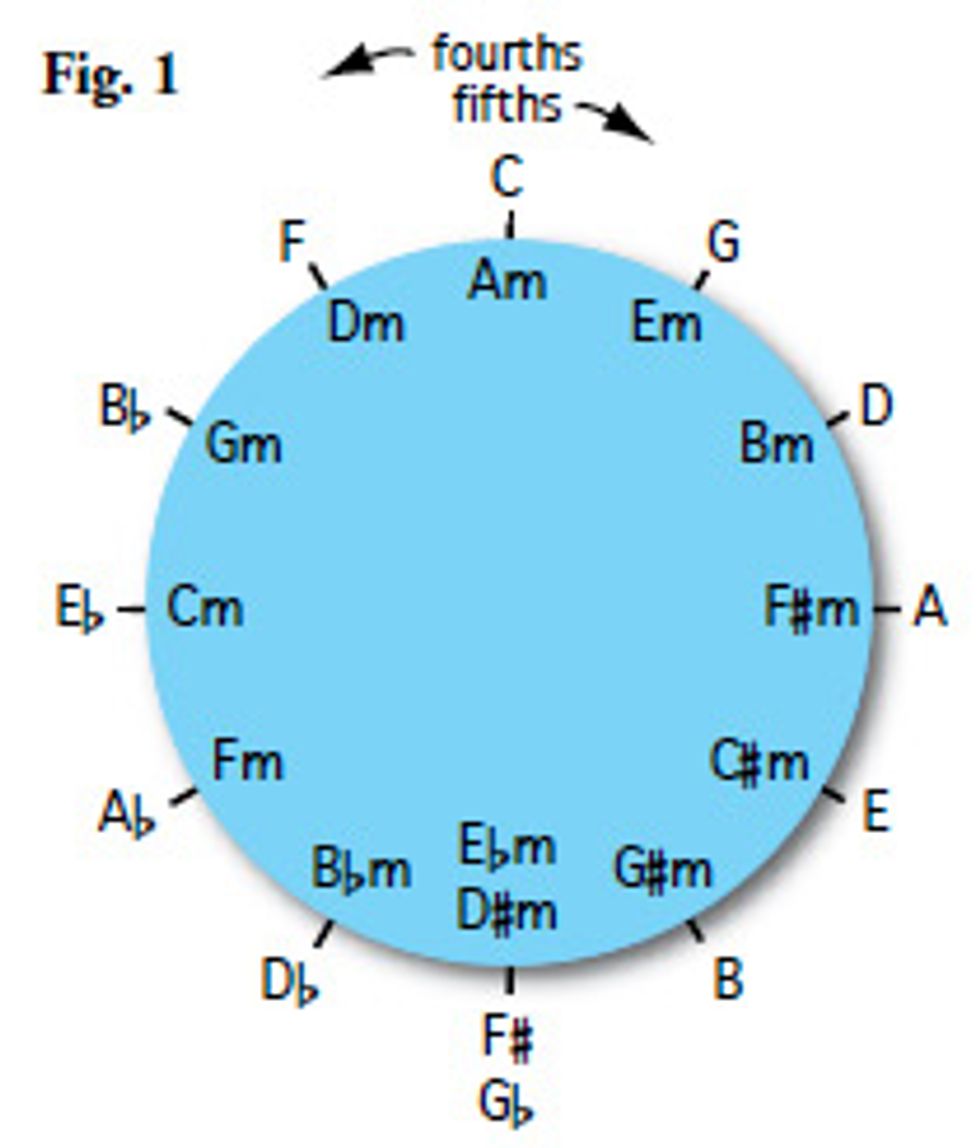
For starters, put your finger on C, right up there at 12 o’clock. Go ahead—touch it, no one’s watching. From C, our starting point, the 11 other notes of the Western music system are arrayed around the outside of this circle. If you travel counterclockwise (CCW), each note is a perfect fourth from its predecessor. So, F is a fourth away from C, Bb is a fourth from F, Eb is a fourth from Bb, and so on. All the way around the wheel.
Move clockwise, however, and our 12 notes are separated by a perfect fifth—G is a fifth away from C, D is a fifth from G, etc.
Now you know how to immediately find the tone a fourth or fifth away from any given note. Simply touch your target note and shift one click CCW (fourth) or CW (fifth). Voilà. This also works for chord roots, so now you can easily locate the major chord a fourth away from Bb (yes, that’s Eb).
But that’s not all. When we use the letters around the outside of the wheel to represent the 12 major chords, we can see their respective relative minors parked right inside the circle. Cool! If you need to know the relative minor chord for B major, find B on the wheel, slide inside, and there you are: G#m.
Our wheel (or cycle chart, as it’s sometimes called) has several other surprises in store. Perhaps the most significant for chord hounds is the pattern shown in Fig. 2. Here we see the I chord at the 12 o’clock position, with the IV (CCW) and V (CW) chords displayed on either side. Directly inside are the vim (relative minor to I), the iim (relative to the IV), and iiim (relative to the V). Sweet—this maps the location of six of the seven diatonic chords in a major key.
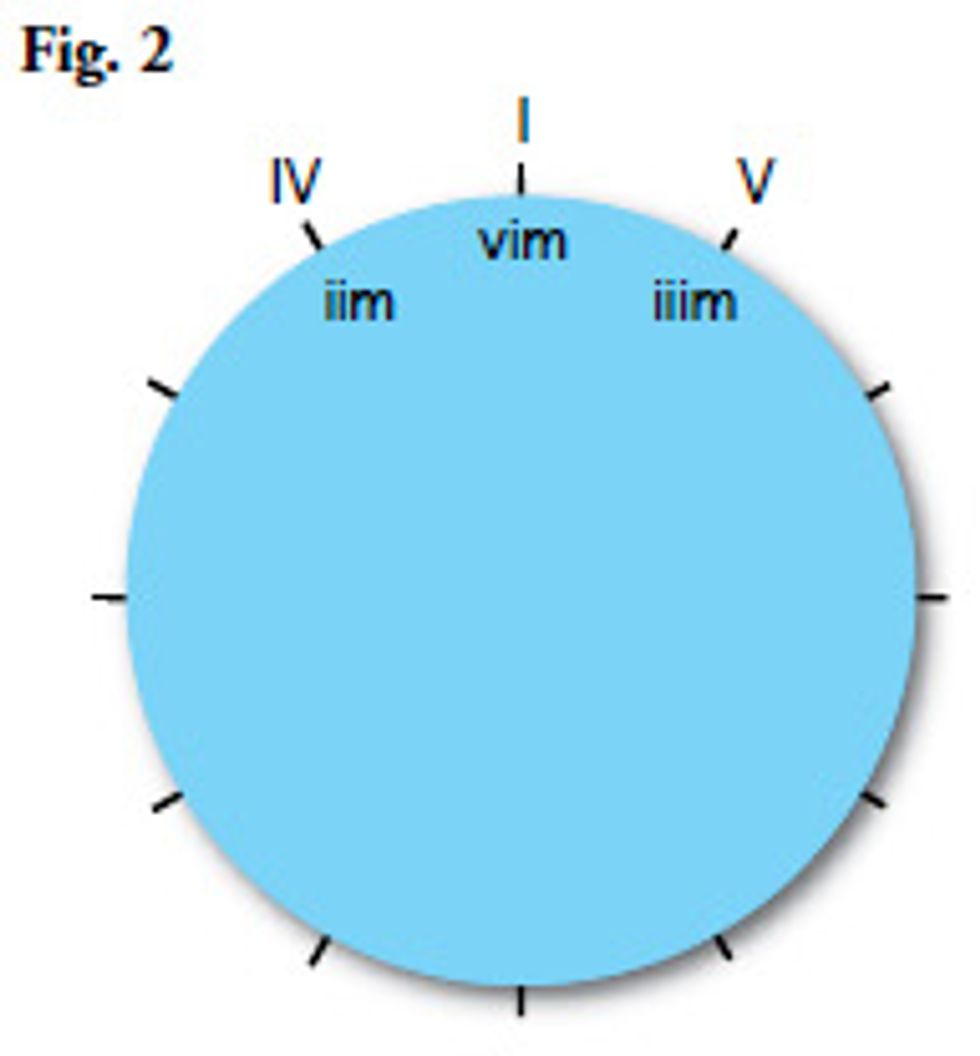
And this pattern holds true anywhere you rotate it on the wheel. Simply shift the pattern CCW or CW and align the I with whichever note represents the I chord of your chosen key. Try it: What are the diatonic chords in the key of A? Mentally align the I to A, and you’ll find the IV (D), V (E), iim (Bm), vim (F#m), and iiim (C#m) all conveniently clustered around the I.
Just remember, don’t think “left” and “right,” but rather “counterclockwise” and “clockwise.” This is crucial for making the wheel work properly.
Okay, that’s fun and useful. But how does the wheel apply to our fretboard? One answer is, it allows us to trace important progressions in every key, thus giving us a way to mindfully practice moving from one key to another—all around the wheel until we return to our starting point.
This is important: If we play chords bigger than triads (four-note 7th chords, for instance, or extended harmony like 9th, 11th, and 13th chords), assuming we stay strictly within our key, the iim will always be in the minor 7th family (which includes minor 9, for example), the V chord will be a dominant 7th type (or dominant 9, 11, or 13), and the I chord will be a major 7th type (or larger).
Check out Fig. 3, a iim-V-I progression in the key of C. Here we have a classic jazz cadence: Dm7–G13–Cmaj7. This is what jazzbos call a “two-five-one.” This progression lies at the heart of hundreds of standards and jazz tunes—the way a I–IV–V progression lies at the heart of blues (“let’s jam a one-four-five in the key of C”). Going back to Fig. 2, trace this iim-V-I movement with your finger and observe its triangular shape. We’ll be replicating this shape all around the Circle of Fourths and Fifths.
or download example audio

Using the wheel to work out a iim–V–I cadence in six keys, I came up with the progression in Fig. 4. If you eyeball the music, you’ll see that we’re rolling CCW around the wheel, playing through the keys of F, Bb, Eb, Ab, Db, and Gb. (I stopped at six keys simply for space considerations. You can continue moving CCW all the way around the wheel until you return to the key of F. It’s a great workout for your fingers and ears.)
or download example audio
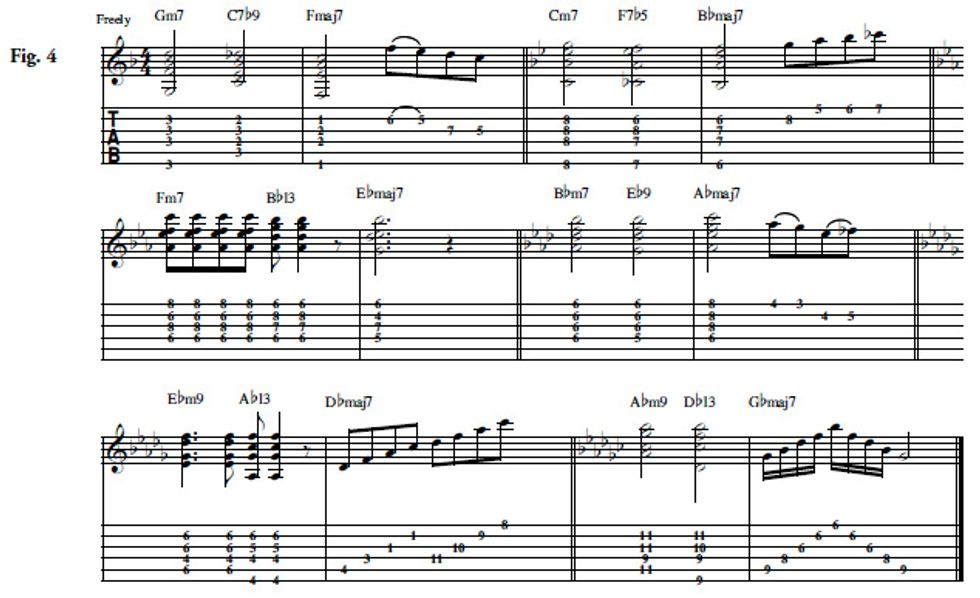
To keep things interesting, I added some rhythmic variations and a few single-note lines to connect the last chord in one key to the first chord of the next. As you play this 12-bar passage, go slowly. Listen for the underlying harmonic movement within each key, as well as how one key jumps to the next. It’s more important to focus on the sounds than to nail the chord changes in tempo. Start by tuning into the root motion and go from there.
Next month, we’ll find more ways to work out with our training wheel. Meanwhile, try cycling through a few iim- V-I progressions of your own.
 Andy Ellis is a veteran guitar journalist
and Senior Editor at PG. Based
in Nashville, Andy backs singer-songwriters
on the baritone guitar, and also
hosts The Guitar Show, a weekly on-air
and online broadcast. For the schedule,
links to the stations’ streams, archived audio
interviews with inspiring players, and more,
visit theguitarshow.com.
Andy Ellis is a veteran guitar journalist
and Senior Editor at PG. Based
in Nashville, Andy backs singer-songwriters
on the baritone guitar, and also
hosts The Guitar Show, a weekly on-air
and online broadcast. For the schedule,
links to the stations’ streams, archived audio
interviews with inspiring players, and more,
visit theguitarshow.com.